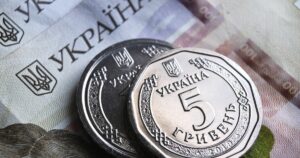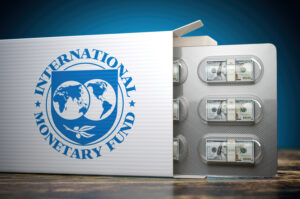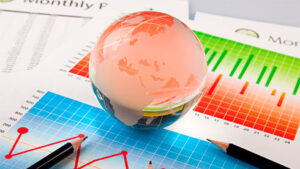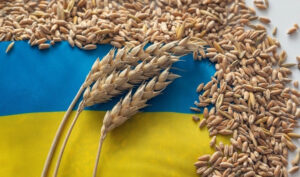
According to the National Bank of Serbia (NBS), the country’s economy has achieved impressive results in 2024, becoming one of the most stable and fastest growing in Europe. The expected GDP growth is 3.8%, which is significantly higher than the European average. This was made possible by a prudent monetary policy, investment initiatives, and the successful recovery of key sectors of the economy after the global crises of recent years.
One of the most significant events of the year was the assignment of an investment credit rating to Serbia. This status strengthens the confidence of international investors in the country, opening access to more favorable financial conditions and attracting large investments. Experts emphasize that this step is an important incentive for further economic growth.
An important economic achievement was the successful reduction of inflation to the target range of 3% ± 1.5%, which was achieved in May 2024. Since then, the inflation rate has remained stable, which demonstrates the high efficiency of the measures taken by the National Bank.
Throughout the year , Serbia demonstrated the stability of the dinar against the euro. This not only strengthens the confidence of the population and business, but also attracts the attention of foreign companies that view Serbia as a reliable economic partner.
The Serbian government continues to actively support small and medium-sized businesses by introducing preferential lending terms and subsidy programs. In 2024, significant funds were also allocated for the development of infrastructure, agriculture, and the IT sector, which created new jobs and improved the business environment.
The economic achievements of 2024 have strengthened Serbia’s position as one of the leaders among Europe’s emerging economies. New challenges and goals lie ahead, including further reducing inflation, developing export potential, and improving the quality of life. The country’s leadership is confident that the increased pace of reforms will allow the country to maintain its positive momentum in the coming years.
These results are proof of the resilience of the Serbian economy and its ability to adapt to modern challenges, which strengthens the country’s position in the international arena.

Ukraine’s real gross domestic product (GDP) grew by 2% in the third quarter of 2024 compared to the third quarter of 2023, according to preliminary data from the State Statistics Service (Ukrstat). According to the statistics agency, seasonally adjusted real GDP increased by 0.2% in the period under review compared to the previous quarter.
As reported, in late October, the National Bank of Ukraine raised its economic growth forecast for 2024 from 3.7% to 4%, and for 2025 from 4.1% to 4.3%. At the same time, the NBU downgraded its inflation forecast for 2024 from 8.5% to 9.7%, and for 2025 from 6.6% to 6.9%.
The Ministry of Economy expects Ukraine’s GDP to grow by 3.9% in 2024, with inflation at 9.5%. According to the State Statistics Service, Ukraine’s GDP grew by 5.3% in 2023 after a 28.8% decline in 2022.
In the first quarter of 2024, real GDP grew by 6.5%, and in the second quarter – by 3.7%.

The National Bank of Ukraine has estimated the growth of Ukraine’s real gross domestic product (GDP) in the third quarter of 2024 at 4% compared to the same period last year, while previously it had forecast it at 3.1%.
“The harvesting of late crops started earlier than last year and continues, which supported the agricultural performance in the third quarter. Stable operation of the sea corridor and loose fiscal policy also supported economic activity,” the NBU said in its Inflation Report published on its website.
The NBU noted that such a revision of the economic dynamics assessment in the third quarter made it possible to raise the GDP growth forecast for this year from 3.7% to 4%.
It is specified that at the end of the third quarter, the harvested area of late crops was 81% higher than last year, and the harvest volume was 68% higher, the volume of cargo transshipment for export in seaports increased 2.1 times in the third quarter of 2024 compared to the third quarter of 2023, and the volume of rail freight increased by 15%.
“As in previous quarters, investment demand made a positive contribution to GDP growth in the third quarter. In particular, it was supported by public capital investment in defense and related projects, such as weapons production, as well as disaster relief spending,” the NBU added.
He also emphasized the growth of private sector investment due to further improvement in the financial results of enterprises and their significant needs for energy-autonomous equipment given the difficult situation in the energy sector.
Explaining the slowdown in growth to 2.4% in the fourth quarter, the NBU cited earlier harvesting of late grains and oilseeds and their significantly lower yields compared to last year as one of the reasons for the negative contribution of agriculture to real GDP.
As for 2025, the NBU has improved its growth forecast for the first quarter from 1.8% to 2.3%, and for the second quarter from 2.8% to 3.4%, expecting growth to accelerate to 4.6% in the third quarter and 6.3% in the fourth quarter, whereas previously it had estimated growth of 5.1-5.9% for the second half of the year.
As a result, the overall GDP growth forecast for next year has been improved from 4.1% to 4.3%, and in nominal terms by UAH 100 billion to UAH 8.72 trillion, while this year’s estimate of nominal GDP was raised by UAH 40 billion to UAH 7.63 trillion.
“In the future, Ukraine’s real GDP growth will accelerate (to 4.3% in 2025 and 4.6% in 2026). This will be facilitated by maintaining a loose fiscal policy, revival of domestic demand, which will be supported by wage growth, increased harvests and stable external demand, as well as investments in recovery, in particular in the energy sector,” the NBU said.
At the same time, he emphasized that economic growth will be constrained by a shortage of labor, security risks, migration processes, and the slow normalization of economic conditions.
In the updated report, the NBU retained three key risks to the forecast (with a strong impact and a probability of 25-50%): a longer duration and intensity of the war, higher budgetary needs, and a greater energy deficit due to further damage to the energy infrastructure.
Among the negative risks with a high probability (25-50%), the NBU added the potential pass-through to prices of higher interest rates or additional taxes, although the NBU assesses its impact as moderate.
The impact of the risk of more intense and prolonged blocking of cargo traffic across the border with certain EU countries remains weak in the updated Inflation Report, with the probability decreasing to less than 15%.
The NBU added increased emigration to the risk of rising geopolitical tensions with a moderate impact and a probability of 15-25%.
In addition, the probability of a positive risk, i.e. the rapid restoration of damaged energy infrastructure, has been reduced from 15-25% to less than 15%.
“The balance of risks in the baseline forecast is shifted towards increased price pressure,” the NBU said.
As reported, Ukraine’s GDP, according to the State Statistics Service, grew by 5.3% in 2023 after a 28.8% decline in 2022, including 4.7% growth in the fourth quarter of last year. In the first quarter of this year, the State Statistics Service estimated GDP growth at 6.5%, and in the second quarter – at 3.7%.

The International Monetary Fund (IMF) expects Ukraine’s current account deficit to widen from 5.4% of GDP in 2023 to 8.1% and 14.3% of GDP in 2024 and 2025, respectively, according to the updated World Economic Outlook (WEO) released on Tuesday.
Earlier, in June of this year, the Fund estimated the current account deficit next year at 5.8% of GDP, and in 2026 – at 6.9% of GDP.
The IMF attributes the widening of the current account deficit to the persistent need for imports during the war, the impact of labor shortages on exports, and a decrease in grant funding. In the Fund’s view, these negative factors will outweigh the favorable impact of improved shipping routes, private remittances, and debt restructuring.
In the materials published after the fifth review of the EFF Extended Fund Facility program, it is noted that the current account deficit in the first half of 2024 increased to $8.6 billion compared to $1.8 billion in the first half of last year. The IMF cited a decline in grants from partners as the main reason.
Meanwhile, the trade balance in goods deteriorated by 8% yoy as high imports from the defense and energy sectors offset exports (especially of agricultural products and iron ore). The balance of services, on the other hand, improved with the end of the border blockades and a reduction in cash withdrawals by Ukrainians abroad.
The IMF predicts that after falling by 15.4% in 2023, exports will grow by 15.7% in 2024 and by another 6.2% in 2025. At the same time, imports, which grew by 21.5% in 2023, will increase by another 14.4% this year and by 7% next year.
According to the Fund’s estimates, the growth of foreign direct investment this year will slow to 2% of GDP from 2.6% of GDP last year, and in 2025 it will only slightly accelerate to 2.1% of GDP.
At the same time, thanks to the continued significant external financial support, the IMF forecasts that the country’s reserves will grow from $40.5 billion last year to $42.6 billion this year and $44.9 billion in 2025.

Global public debt may exceed $100 trillion (93% of global GDP) in 2024, according to the Fiscal Monitor report published by the International Monetary Fund (IMF) on Tuesday.
It is expected to continue to grow in the medium term and may rise to 100% of GDP by 2030.
At the same time, under the most unfavorable scenario, global debt could be almost 20 percentage points higher than the baseline forecast and reach 115% of GDP in 2026.
“Debt stabilization (or reduction) is likely to require much more significant fiscal adjustments than currently planned. Now is the right time to restore fiscal buffers, and delaying them is costly,” the report says.
The IMF believes that public debt will continue to grow in countries such as the United States, the United Kingdom, Brazil, France, Italy, and South Africa.
“While debt is projected to stabilize or decline in about two-thirds of countries, it will remain well above levels projected before the pandemic,” the report says. Moreover, the countries that are not expected to stabilize account for more than half of the world’s debt and about two-thirds of global GDP.
Government spending to address the problems of the “green transition” in the energy sector, population aging and security issues is likely to increase fiscal pressure in the coming years, according to the Fund’s experts.
“It’s time for governments to get their act together,” said Era Dabla-Norris, IMF Deputy Director for Fiscal Affairs. – “All countries need a strategic turnaround to reduce debt risks.
For more information about public debt and possible country defaults, please watch the video on the YouTube channel of the Experts Club think tank: https://youtu.be/gq7twYrWuqE?si=0WcmU20F95oeVKZp

Ukraine’s agricultural sector made a significant breakthrough in development in 2010-2021, employing 17% of Ukrainians and generating 19% of GDP, while 70% of its products are exported, which is one of the highest rates in Europe, said Acting Minister of Agrarian Policy and Food Taras Vysotsky.
According to him, Ukraine’s production is enough to feed almost 400 million people.
“Ukraine’s role in international food security is very important. After the full-scale invasion of the aggressor country, Ukraine was unable to export its products for four months. This led to a 35% increase in the global food price index in 2022. In African countries, hundreds of millions of people were forced to significantly reduce their food consumption,” the press service of the Ministry of Agrarian Policy and Food quoted Vysotsky as saying in his speech at the national educational and professional course for young people ”State Builder: the Way to Restore the State.”
Vysotsky noted that Ukraine has traditionally exported grains and oilseeds and many other products. In particular, Ukraine ranks 4th in the world in corn exports, and first in sunflower oil. In addition, it ranks 7th in poultry exports. Ukrainian dairy farmers are among the top ten exporters of butter. In addition, Ukraine ranks 4th in walnut production and is one of the world’s leading exporters of honey.